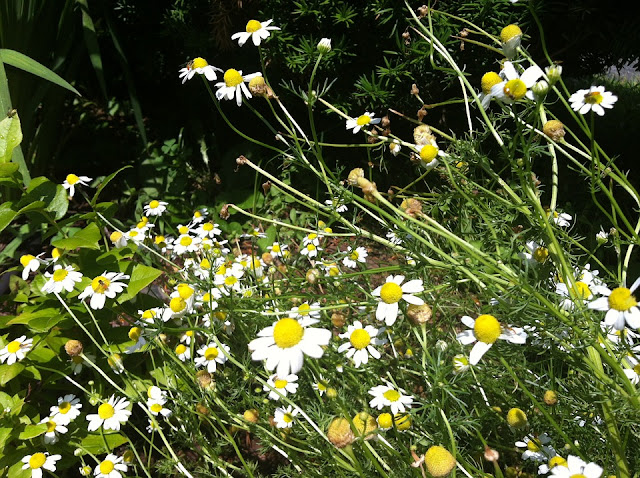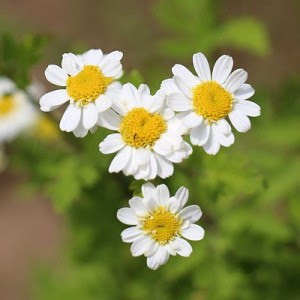About Feverfew
Feverfew tansy is native to southeastern Europe and is now common in North America (including Connecticut) and Australia. American Feverfew is found in glades, upland prairies, rocky open woods, forest openings, ledges, pastures, and roadsides.
Feverfew is a perennial that grows to two or three feet in height and produces lovely clusters of yellow daisy-like flowers that bloom amid feathery leaves. This plant flowers May - September. It is a close relative of chamomile and is sometimes confused with this herb. The difference is that medicinal oils are found in the flowers of chamomile while the therapeutic ingredients of feverfew are found in the leaves.
Feverfew is rich in vitamins and minerals especially niacin and thiamin, chromium, magnesium, manganese, phosphorous, potassium and selenium.
Medicinal and Culinary Use
Some Native American tribes pounded the feathery leaves of this plant into a poultice and used it to treat burns. The ashes of the leaves of feverfew were also used to treat the sores on the back of a horse.
Additionally, Native Americans used feverfew to heal wounds, deal with cramps and to achieve a meditative state. Many healing practices and spiritual ceremonies are earth-based honoring and respectful of Father Sky, Mother Earth, Grandfather Sun and Grandmother Moon.
Additionally, Native Americans used feverfew to heal wounds, deal with cramps and to achieve a meditative state. Many healing practices and spiritual ceremonies are earth-based honoring and respectful of Father Sky, Mother Earth, Grandfather Sun and Grandmother Moon.
Did you Know
The name feverfew is derived from the Latin term febrifugia which means to "drive out fevers."
Dioscorides, an ancient Greek doctor used this plant to speed the birth process.
In the 1700s, American clergyman, Cotton Mather recommended chewing feverfew to ease tooth pain.
In the 1980s a study in Britain demonstrated that feverfew was effective in treating migraine headaches and helped to reduce the number and severity of these attacks.
The Institute for American Indian Studies
Located on 15 woodland acres the IAIS has an outdoor Three Sisters and Healing Plants Gardens as well as a replicated 16th c. Algonkian Village. Inside the museum, authentic artifacts are displayed in permanent, semi-permanent and temporary exhibits from prehistory to the present that allows visitors a walk through time. The Institute for American Indian Studies is located on 38 Curtis Road in Washington Connecticut and can be reached online or by calling 860-868-0518.



No comments:
Post a Comment